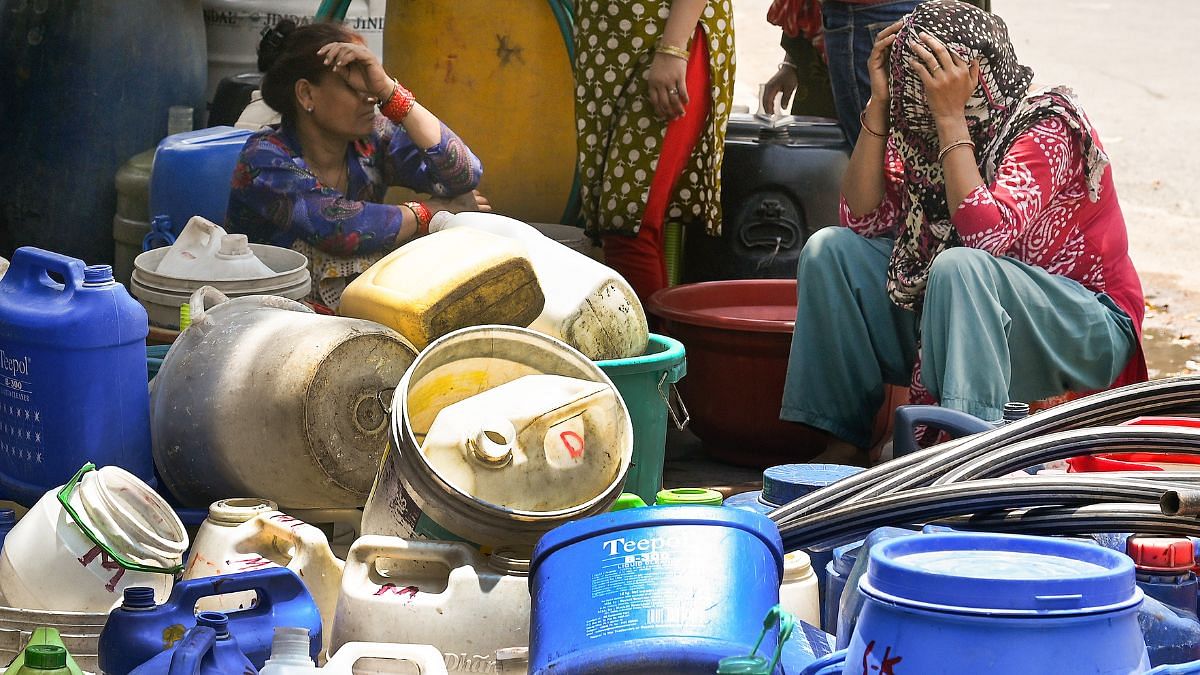
WATER SHARING ROW: YAMUNA RIVER BOARD SAYS HIMACHAL MUST PROVE RELEASE OF EXTRA WATER FOR DELHI
New Delhi: The tussle over the sharing of extra water with Delhi to tide it over amid water scarcity caused by the heatwave worsened Monday. The Upper Yamuna River Board (UYRB) has said that Himachal Pradesh should prove it has been releasing 137 cusecs of unutilised water to the Hathnikund Barrage, which can be further released by Haryana for Delhi’s use.
In a report submitted to the Supreme Court Monday, the UYRB — a central government body set up to regulate allocation of Yamuna water — cited a letter sent to Haryana by Himachal Pradesh on 6 June. In this letter, Himachal Pradesh had said its unutilised share of water was already flowing uninterruptedly to the barrage and that Haryana should release this to Delhi.
However, according to the board’s status report, there is no way to measure the excess water supply — which Himachal Pradesh says is already flowing — and therefore, the state needs to provide additional information to support the claim.
The Supreme Court on 6 June had directed Himachal Pradesh to release 137 cusecs of surplus water, asking Haryana to facilitate the onward flow to Delhi. The order had come in response to Delhi government’s application urging the court to direct Haryana to share the surplus water to help it battle the problem of acute water shortage in the capital.
The direction to Himachal had come amid stiff opposition from Haryana, which contested the hill state’s claim that it had the capacity to fulfil Delhi’s rising demand for water. The apex court will now hear the matter on 12 June.
What the UYRB report said
The board’s report appears to support Haryana’s contention. It said that Himachal Pradesh’s letter reflected that the state did not release any additional water subsequent to the Supreme Court’s order.
This direction from 6 June required Himachal Pradesh to release surplus drinking water by 7 June with prior intimation to the Haryana government. The board was ordered to measure this excess water at Hathnikund for its onward supply to Haryana, and then to Delhi.
According to the board’s status report, since Himachal does not have any storage from where it can release the additional 137 cusecs of water in line with the SC order, there are only two ways by which the board can find out if the excess water has actually reached Hathnikund.
For both, the board said, Himachal will have to provide it with the data to reinforce the viewpoint that it is sparing 137 cusecs from its share. As direct measurement of water received at the barrage is not possible, the board suggested that Himachal should either reduce its present utilisation by 137 cusecs and submit the details in tabular form to show the same, or submit complete information regarding the withdrawal points and discharges of water actually withdrawn by the state.
The board highlighted the information it had sought from Himachal in 2020 during its 58th meeting, which is yet to be supplied by the state. It has repeated its demand for the said information in the report submitted to the top court.
UYRB said that Himachal Pradesh must provide a map to show all the diversion structures on the tributaries of Yamuna, its canal system, a list of canals using the river water, their design discharges and month-wise utilisation of the river water from 2000 onwards.
“Himachal Pradesh should provide the details in the following table to ascertain their unutilised share in the absence of which the board is not in a position to estimate the unutilised share of the state of HP which they want to share with Delhi and pass through Haryana,” the report read.
According to the framework of the memorandum of understanding between the Yamuna riparian states in 1994, and again in 2012, 4,061 cusecs of water is distributed between March and June amongst Haryana, Uttar Pradesh, Uttarakhand and Delhi.
The national capital receives additional water from Haryana via the Munak canal system as well. On its inspection, the report said, the board found that water supplied for Delhi was more than what was to be released by Haryana, which is 1050 cusecs.
The board also highlighted how various water treatment plants in Delhi showed that total production of water in the last four weeks had been more than their total production capacity.
(Edited by Mannat Chugh)
2024-06-10T16:16:37Z dg43tfdfdgfd